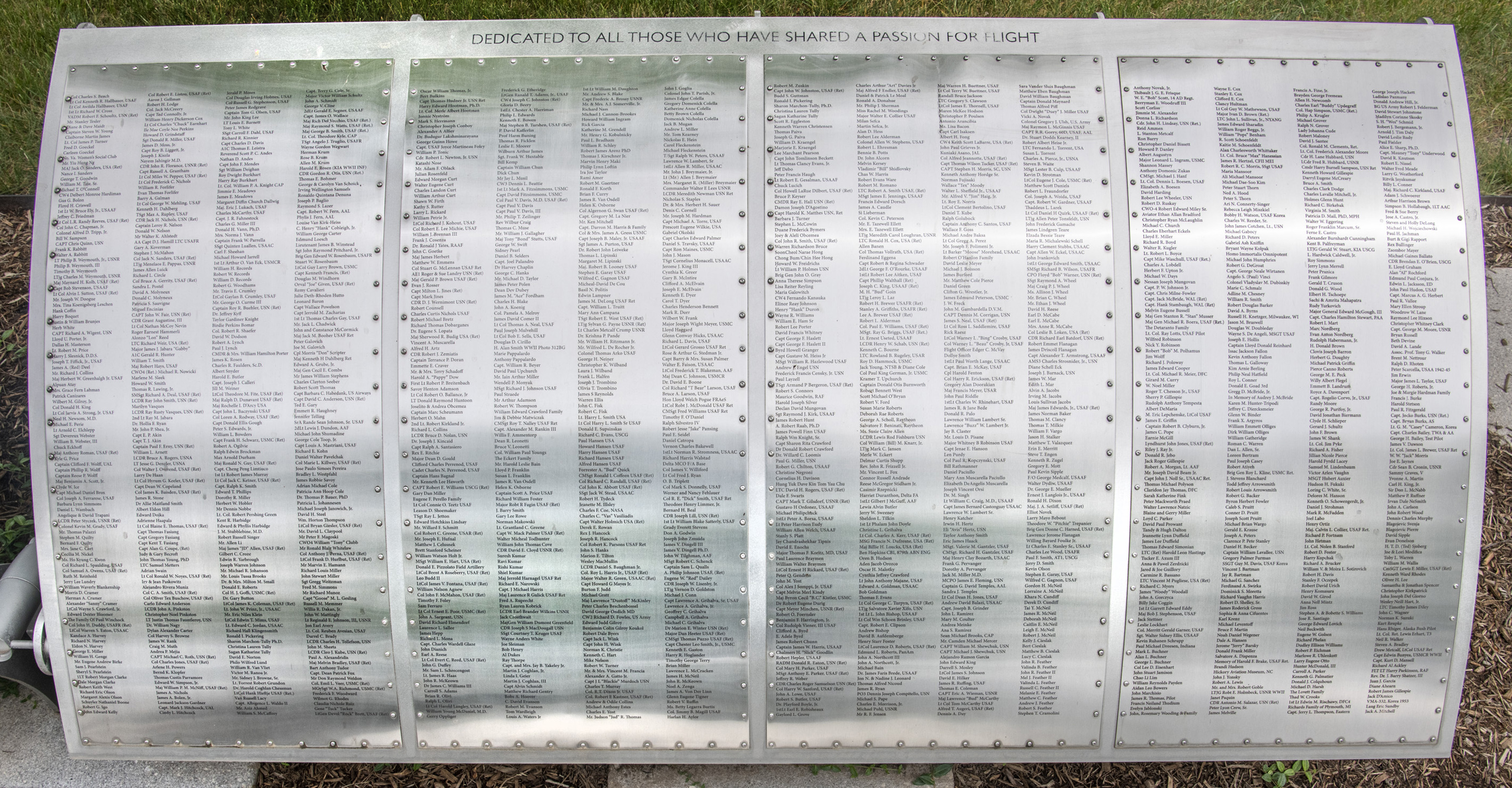Clifton G. Wrestler Jr.
Foil: 17 Panel: 3 Column: 3 Line: 39
Wall of Honor Level: Air and Space Friend
Honored by:
Ms. Janet Wrestler
Clifton G. Wrestler Jr. graduated from college in February 1959 and started work at NASA Langley in the Transonic Dynamics Tunnel. One of the assignments was to do stability calculations for transporting the missile from the assembly building to the launch pad using a barge in a canal yet to be dug. After considering the moving of approximately one million pounds, from the center of the barge to land during the offloading process, he suggested and brought pictures of equipment being used for mining. One of the pictures, led to the space shuttle transporter design that was used for many years.
He redesigned the number one and two turning vanes for the Transonic Dynamics Tunnel with solid steel vanes to replace the hollow vanes that had not been replaced during the refurbishment of the tunnel.
He also, worked on recovery systems for the Saturn Booster using the Rogallo wing concept. Our team build models, from small scale models to a fifty foot inflatable wing, to explore the stability boundaries for both the wing and for the wing body combinations.
In 1962, he went to work for the US Army Transportation Research Command performing research on V/STOL and on rotary wing aircraft. He was part of the team that had composite rotor blades designed for a specific helicopter which had metal "D" spar rotor blades The composite blades were built and tested successfully.
He received commendations for work performed on the OV-10 and AH-56 evaluations.
Through a contract with the Boeing Co., he had a Computational Fluid Dynamics program developed that could handle V/STOL aircraft. The XV-5 fan-in-wing concept was used as a model to test the program. This computer program was made available to other Government agencies by placing the program with NASA, Langley.
He received a Secretary of the Army Fellowship to study at the vonKarman Institute for Fluid Dynamics. While at vonKarman, he designed a flow visualization tunnel and did work on gust loading on generic three dimensional models. He received the Diploma (MS equivalent).
He transferred to an Army long range planning group to help plan the aviation and transportation systems for the Army 20 years into the future. Concepts for systems were envisioned, and in most cases, some preliminary design efforts were made. He had many concepts in aviation which used extrapolation of propulsion, structures and systems to provide the reader what could be in the future if the research and development was accomplished. One of his non-aviation concepts was an exoskeletal frame to allow the foot soldier to travel faster and further. This frame is now in advance development. He was recognized by the Army Scientific Advisory Panel for his contributions.
Clifton Wrestler joined the Research and Development Directorate of the Army Material Command (AMC). While at AMC Headquarters he helped manage research from basic research to advance systems under development and with assigned program managers such as the CH-47 and the Advance Scout Helicopter.
In 1996 he went to work for the NAVAIR at Program Management Office in Norfolk Virginia, where he managed out of production aircraft and their respective engines, such as the P-2, C-118, RF-8G, C-9B, KA-6D, EA-6A and CT-39. When the C-9B was transferred to our office, the sustainment was being accomplished by the contractor that built the aircraft. Due to the high cost, we decided to compete the support and the depot work and due to our success, the Air Force was mandated to join the Navy. New contracts had to be awarded covering both the Navy and Air Force requirements. The Navy went on to buy two more new C-9B aircraft. Then the requirement for more C-9 type aircraft came about to replace the retiring C-118 aircraft. The Navy decided to buy used DC-9 aircraft. Clifton Wrestler was instrumental in the development of the contracts and in the inspections of the aircraft. He led the inspection team to many areas including both domestic and to Australia and to various countries in Europe.
He retired when the Program Management Office closed. He taught at the community colleges for a couple of years, then went to work doing technical evaluations and cost analysis of proposals submitted to the Government. Today, after more than 50 years of work with aviation, he finds the work to be challenging in trying to provide the best value solution for the Government.
Wall of Honor profiles are provided by the honoree or the donor who added their name to the Wall of Honor. The Museum cannot validate all facts contained in the profiles.
Foil: 17
All foil images coming soon.View other foils on our Wall of Honor Flickr Gallery
